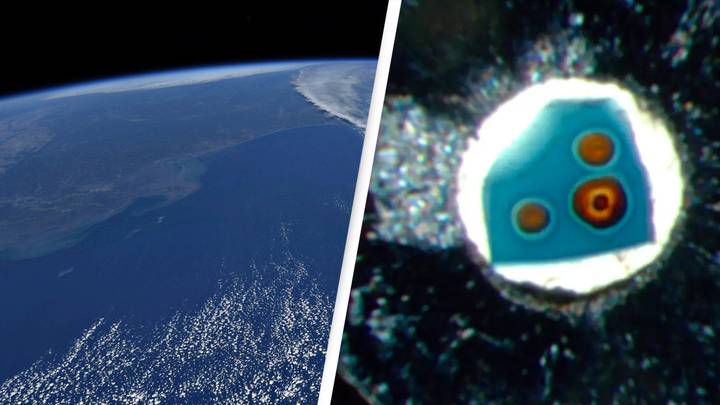Did you know that 71 percent of the Earth’s surface is covered in water? Okay, maybe that one was too easy. But try this one on for size: Did you know that there’s an absolutely massive supply of water hidden underneath the Earth’s crust that’s three times bigger than the oceans that sit on the surface?
Back in 2014 scientists discovered that we essentially have a reservoir of water hidden beneath our feet – though it might not look that way at first.
This huge supply of water is buried a whopping 400 miles underground, so it’s not exactly accessible. Plus, it’s contained inside a blue rock known as ‘ringwoodite’ in the Earth’s mantel, which acts as a sort of sponge for that huge body of H2O.

So it’s not a liquid, solid, or gas, but a fourth molecular structure of water contained inside the mantle rock. “The ringwoodite is like a sponge, soaking up water, there is something very special about the crystal structure of ringwoodite that allows it to attract hydrogen and trap water,” said geophysicist Steve Jacobsen, who was part of the monumental discovery. “This mineral can contain a lot of water under conditions of the deep mantle.”
The watery rock was discovered by scientists from Northwestern University in Illinois using seismometers to measure the waves being generated by earthquakes across the US.
In their research, they found that the waves weren’t limited to the Earth’s surface, but moving throughout the planet’s core.
By measuring the speed and depth of those waves, researchers were able to work out what sort of rocks the water was being contained in – landing on ringwoodite in the end. Research has found that ringwoodite can contain up to 1.5 percent water.
If the ringwoodite under the surface has just 1 percent water in its molecular build-up, it would mean that it holds three times more water than all of the oceans on the Earth’s surface.
It’s also contained inside a rock called ringwoodite – so good luck getting to it. Credit: Pixabay
This discovery could help scientists determine how Earth was formed, furthering the theory that the Earth’s water ‘came from within’, rather than from asteroids and comets.
Jacobsen explained at the time: “I think we are finally seeing evidence for a whole-Earth water cycle, which may help explain the vast amount of liquid water on the surface of our habitable planet.
The watery rock was discovered by scientists from Northwestern University in Illinois using seismometers to measure the waves being generated by earthquakes across the US.
In their research, they found that the waves weren’t limited to the Earth’s surface, but moving throughout the planet’s core.
By measuring the speed and depth of those waves, researchers were able to work out what sort of rocks the water was being contained in – landing on ringwoodite in the end.
Research has found that ringwoodite can contain up to 1.5 percent water.
This discovery could help scientists determine how Earth was formed, furthering the theory that the Earth’s water ‘came from within’, rather than from asteroids and comets.
Jacobsen explained at the time: “I think we are finally seeing evidence for a whole-Earth water cycle, which may help explain the vast amount of liquid water on the surface of our habitable planet.
For now, researchers have only found evidence of the ringwoodite rock beneath the surface of the US. Now, Jacobsen and his team want to determine whether or not this layer wraps around the entire planet Earth.
